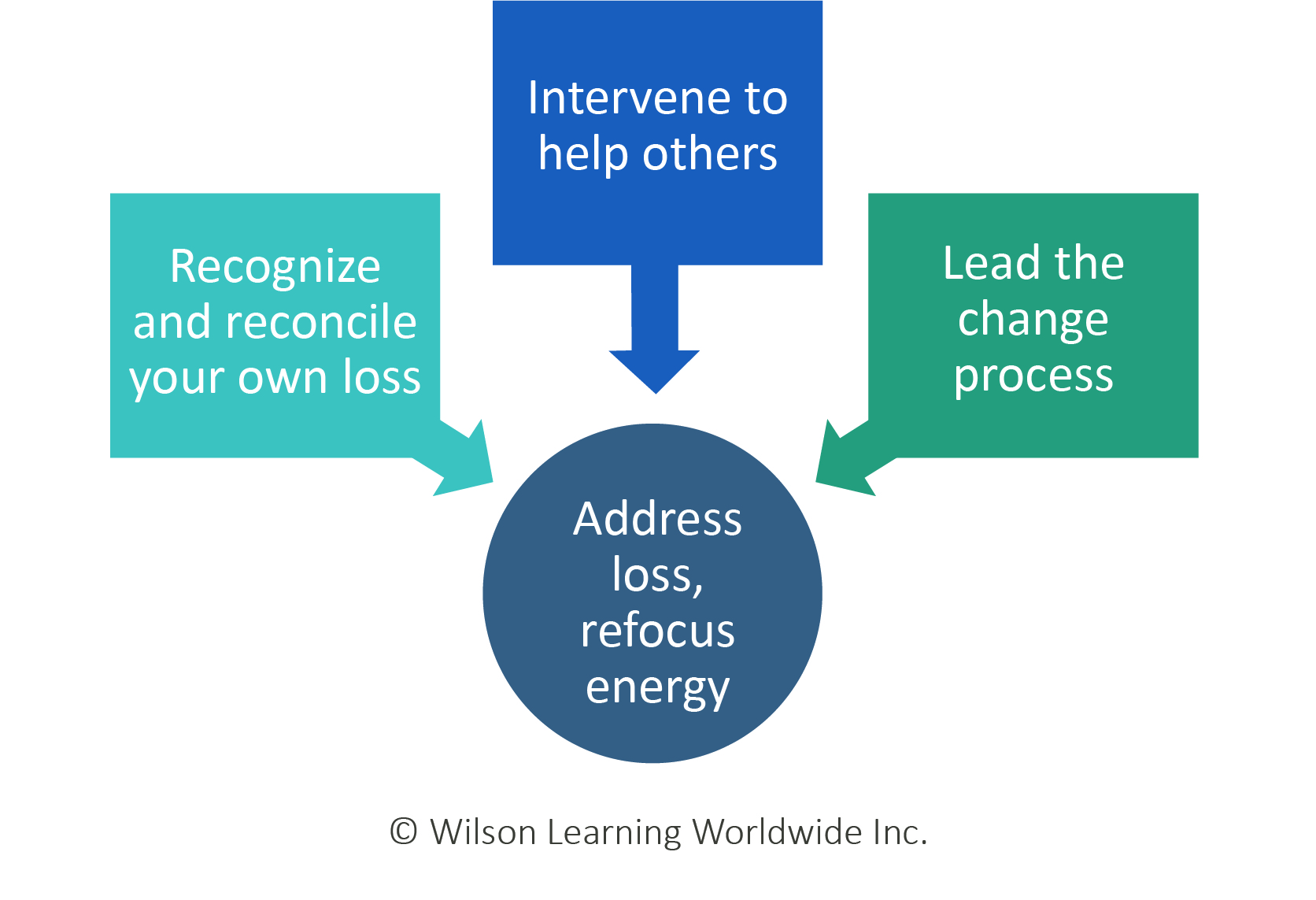Skillfully Leading Forward from This New Place
Resilient Sales Leaders Build Resilient Salesforces

Given the current realities, resilient sales leaders need to mindfully pause and emerge with a proven process to foster a salesforce committed and energized to develop new and sustain current customer relationships using creativity and opportunity to drive results.
In the dizzying swirl of global upheaval, what can you do as a sales leader to lead yourself and your sales team to success in the new “normal”? In light of social distancing and all that it requires, traditional face-to-face access to customers, key stakeholders, and decision-makers is diminished, if not temporarily suspended. With virtual sales fields the new reality, effective sales leadership communication and coaching tactics must adapt.
In this article, we’ll consider the likelihood of your organization surviving or thriving during these challenging times based on:
- What you tell yourself about change
- How you deal with and refocus dispersed energy
- How you lead through change
Understanding Resilience as a Wave vs. a Shield
Deloitte Insights1 believes that a typical crisis plays out over three time frames:
- Respond, in which a company deals with the present situation and manages continuity
- Recover, during which a company learns and emerges stronger
- Thrive, in which the company prepares for and shapes the “next normal”
Three potential mindsets can occur among employees during change, which have a large impact on your employees’ engagement and energy:
- We’re in crisis. Can we survive? It feels like it’s only a matter of time. Employee engagement dims and people live in the loss.
- We’re changing again. Will the changes work? It feels like in-between times. Employee engagement is unpredictable, and people get burned out or put their energy on hold.
- What is our potential? How good can we get? This feels like opportunity. Employees are fully engaged and committed.
A 3-Step Process for Leading in Times of Change
In order to successfully move through organizational change, sales leaders must first reflect on their own situation and deal with their own concerns as sales leaders first. Then, and only then, can sales leaders influence, mentor, and compassionately support their salespeople and support staff as they move through change.
Building your and your salesforce’s resilience involves three critical steps:
1. Recognize and reconcile your own loss. Change is often perceived as a loss—and the uncertainty occurring in the world today is resulting in the loss of sales, economic stability, status, friendships, identity, authority, tradition, purpose, and more. The moment change happens, energy disperses. The natural tendency is to immediately retreat within and think about “What does this mean for me?” However, everyone responds to loss differently in what we call the 4-Dis’s:
- Disorientation—“This isn’t the world I am comfortable selling in with my customers.”
- Discontent—“Isn’t it awful?” “What’s the company going to do to make this right again?”
- Disidentification—“I used to be at the top of my sales game.”
- Disengagement—“The world is coming to an end.” “I’m, going to go broke.”
To be resilient, the first step is to recognize what’s happening, deal with your perceived loss, and resolve the loss within yourself. You can then make a choice to move forward in the context of opportunity, focusing your energy toward creativity, opportunity, and what value and success look like in the new tomorrow.
2. Intervene to help others. Just as you felt a sense of loss by what you told yourself about this loss, so do your salespeople. As the change happened, they too responded to loss, and their Dis might be different than yours.
Salespeople may not tell you that they are struggling with the change. Our experience in training sales leaders to tune in to what employees are saying or doing better equips them to help manage energy dispersed by the salesperson’s perception of the disrupting situation. Sales leaders need to be proactive and recognize the clues salespeople are sending, and then intervene to help them recognize and reconcile their loss at their own pace, as we all move through change at varying speeds.
| If loss is demonstrated by: | Leadership needs to: |
|---|---|
| Disorientation—“This isn’t the world I am comfortable selling in with my customers.” | Reorient by clarifying direction, providing clear expectations and goals, defining roles, etc. |
| Discontent—“Isn’t it awful?” “What’s the company going to do to make this right again?” |
Understand the reason for the anger (usually a form of loss), listen while the employees vent, focus on the cause, and try to help them through it. |
| Disidentification—“I used to be at the top of my sales game.” | Help them identify with the future by creating a sense of opportunity in what is coming; describe how the employee is part of something important and why this is worth doing for the employee and the company. |
| Disengagement—“The world is coming to an end.” “I’m, going to go broke.” |
Ensure employees understand the connection between their own value contribution and the organization's ability to realize the future potential from the change. |
Your communication strategies will change as you operate in a virtual environment. Proactively communicating through video can be an effective way to acknowledge what you do and don’t know, continue to build trust, and show transparency.
There is nothing traditional about this change and using traditional change management step-wise progression to “push” people through change won’t work. Change was pushed out at an alarming velocity to the world. Resilience is proactively intervening to help others move through change, at their pace, for recognizing perceived loss and choosing how they will commit their energy to the change.
3. Lead the change process. The problem with most reactive forms of change management is their focus on countering the negatives of change, countering people’s thoughts about whether they or the organization will survive the change, or concerns over the losses.
Resilience is less about countering the old negative story and more about creating the new story, embedded in the context of realistic opportunity. It’s refocusing your and your sales team’s energy on “what is our potential for growth, sustainability, or going to market going forward?” It is not about what we have lost in this change but what we gain that needs to be told.

Skillfully Leading Forward from This New Place
If you look at resilience as a wave, you allow the troubles to pass through you, change you, and then deal with the loss that is happening to you as a sales leader. If you then understand the Dis’s and your role in intervening with your now virtual sales team, you can lead the change process by keeping the mindset of “what is our potential for even greater results?” as the framework for everything you do and who you are as a sales leader.
1 Deloitte Insights, The heart of resilient leadership: Responding to COVID-19, https://www2.deloitte.com/us/en/insights/economy/covid-19/heart-of-resilient-leadership-responding- to-covid-19.html
To learn more, contact Wilson Learning at 1.800.328.7937 or complete the online form.







 Please complete this form to download Skillfully Leading Forward from This New Place | Resilient Sales Leaders Build Resilient Salesforces.
Please complete this form to download Skillfully Leading Forward from This New Place | Resilient Sales Leaders Build Resilient Salesforces.



